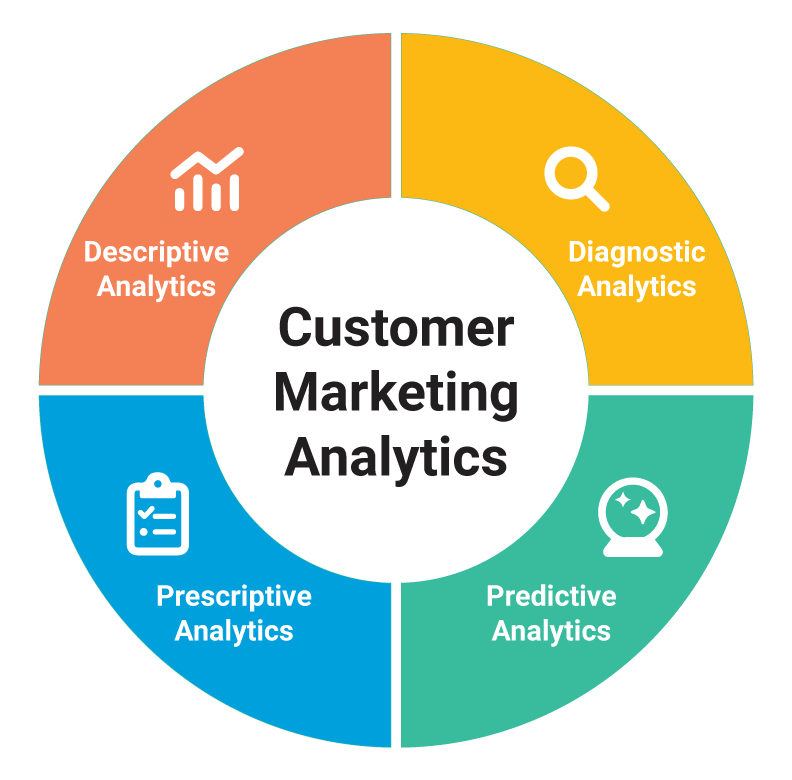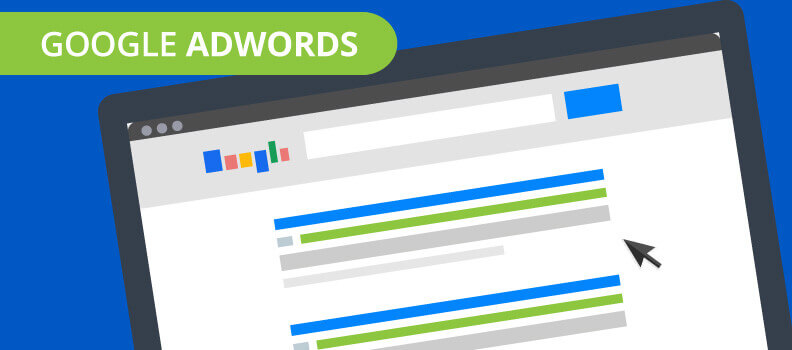Customers are what keep you in business.
So being able to engage with them effectively and, ultimately, build loyalty, is key.
It’s possible to make an educated guess as to what your customers are interested in to engage effectively.
But what if you could know for sure?
Think of all the opportunities you’d have to create personalized experiences, build response rates, and increase your sales!
The good news is that there is a surefire way in today’s world to learn what your customers are interested in called customer marketing analytics. And understanding what they are, how to collect them, and ultimately how you might use them to build your business is detailed below.
What are customer marketing analytics?
Defined as the process through which a business collects and analyzes customer information in an effort to make more informed decisions, customer marketing analytics are a goldmine of data.
What are benefits of customer marketing analytics?
When collected regularly, customer marketing analytics can reveal customer behaviors. This information can then be used by sales and marketing departments as they create opportunities to connect with customers, also called touchpoints. Additional benefits include:
- Increased engagement from customers and prospects
- Improved sales results
- Upsurge in overall customer happiness (resulting in higher retention rates)
- Decreased lead generation and acquisition costs
How is this possible?
When you measure something, you can set benchmarks for success (called KPI’s or Key Performance Indicators) and ultimately improve upon them.
But without data, businesses are left to guess what their customers want or like. Sometimes, those guesses are correct. More often, the answer is surprising.
That is why today’s successful businesses rely on data. Consider that 57% of enterprise organizations use data and analytics to drive strategy and change while 60% of companies around the world use data and analytics to drive process and cost-efficiency.
What are the types of customer marketing analytics?
In general, customer marketing measurements can be bucketed into four categories. Successful businesses utilize all four buckets. When you’re first starting out, it might be helpful to create 1-2 KPI’s per bucket and add more depending on what insights you want to obtain.

- Descriptive analytics: These are measurements which offer a window into how past customers have behaved. (ie: 15% of customers report their product broke within the first month).
- Diagnostic analytics: These measurements give you more insights into the “why” behind customer behaviors. (ie: 25% of customers thought the product would look different)
- Predictive analytics: More easily determine the future behaviors of customers and prospects. (ie: Sales will rise at least 17% in December).
- Prescriptive analytics: Offers insights into how your business might influence the behavior of prospects or customers. (ie: multi-channel marketing campaigns increase product sales by 30%).
KPI’s for first-time customer marketing analytics users
The first step is creating applicable KPI’s that you would like to measure and potentially improve upon. There are, of course, and overwhelming number of KPI’s that will pop up in a search. Too many to measure out of the gate! So, when you’re getting started, it can be more helpful to think in terms of your company’s top three goals. From there, determine what 3-5 measurements would prove most helpful in achieving those goals. Once you have a hold on those measurements, you can add in more.
Some KPI’s a business might consider in early stages of measurement include:

- Customer Satisfaction. This can be measured by using a simple survey following purchase. Ask something like “How satisfied were you with today’s experience?” and allow customers to rate their experience on a scale. Once a customer gives their rating, you can take them to a follow up page where they can add more information regarding their response. Bucket those responses to see where you might be able to improve.
- Customer Churn. This is a measurement of turnover. How many current customers stop utilizing your product or service over a given time period? If your churn rates are low, your customers are likely satisfied—with your product, with overall service, with the purchase process, etc. If your churn rates are high, it’s important to look into why that might be. Answers can often be found when you measure customer satisfaction.
- Pages Per Visit. How many pages of your site does the average prospect visit? This might seem irrelevant, but the answer can reveal startling insights. For instance, a high number of pages per visit could indicate that your content is hitting the mark with your target audience. This is information you can carry over into marketing initiatives like email, direct mail, social media, and display ads. A low number of page visits can indicate less interest from customers and potential customers. Consider ways you might improve the graphics or copy to make what you sell sound more appealing.
- Lead Response Time. This is how quickly you average getting in touch with a prospect. In general, responding quickly to an initial inquiry generates a more positive response. However, statistics show that the average lead time is nearly two business days with only 27% of leads getting contacted at all! Meanwhile, a 1-minute response time has been shown to offer up to a 391% increase in conversions.
- Conversion Rate. Measuring the successful completion of an action by a customer or prospect, a conversion rate tells you if you’re hitting (or totally missing) the mark with your customers. For instance, if you’re seeing a low conversion rate in your email marketing, this could suggest your emails don’t have enough value for your customers. On the other hand, a high conversion rate with your email marketing indicates that your message (and corresponding CTA) resonates with your audience.
Best practices for customer marketing analytics
When you want to get the best sales and marketing results from your data, you’ll want to keep these best practices in mind.
Collect customer data from multiple channels: Data is everywhere you look. And the feedback you get from one channel can be different than the feedback you get from another channel. However, when you use an omni-channel approach to data collection, you get better insights regarding your customers and may find it easier to pivot your products or services to meet their needs.
Don’t dismiss qualitative data: The numbers don’t lie—but truth can be found in words, too. Don’t ignore customers who type up reviews of your business or leave feedback in your forms. Often, paying attention to such feedback can help you spot problem areas more quickly.
Always test. It’s easy to fall into a routine with your measurements and never push out new predictions. However, when a business continues to come up with new or improved measurements, they can become more proactive, as opposed to reactive, in their sales and marketing efforts.







